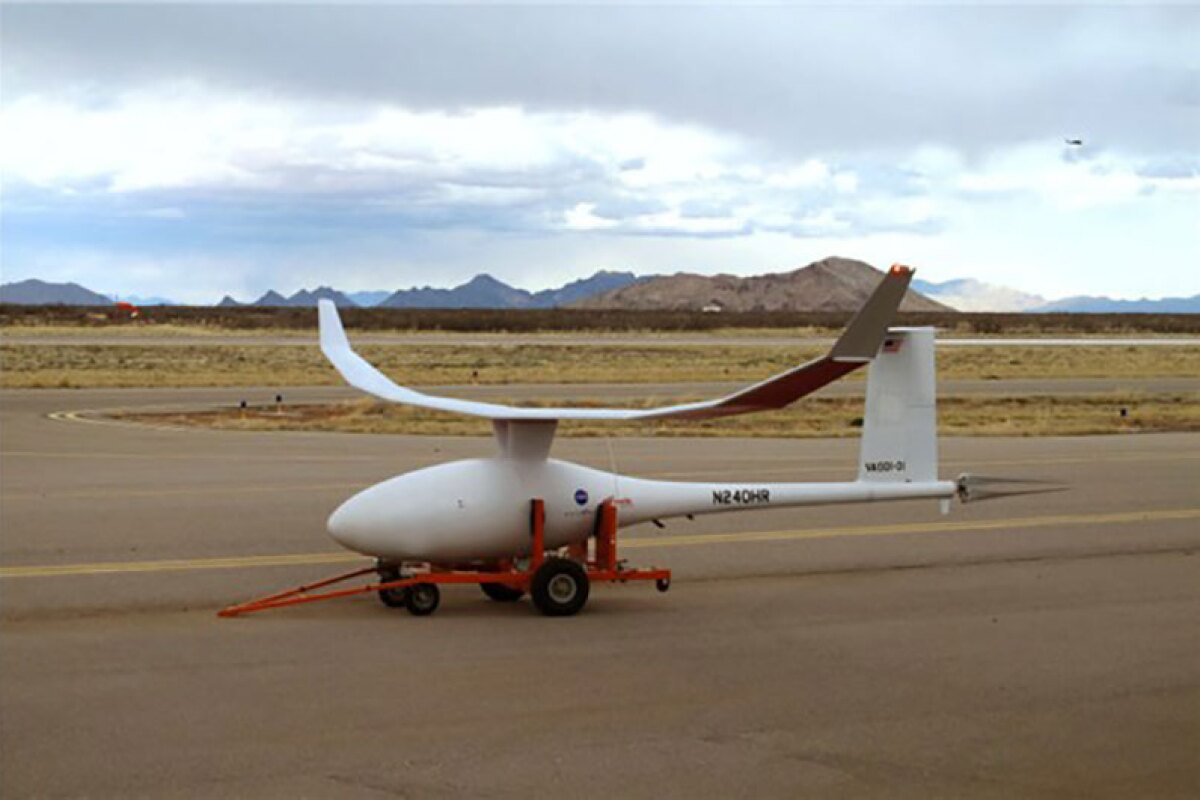Vanilla Aircraft, LLC has announced its VA001 unmanned aircraft system (UAS) completed a non-stop, unrefueled 56-hour flight last month. A representative from the National Aeronautic Association has certified it as the world's longest duration flight for a combustion-powered UAV weighing between 50 to 500 kg (110 to 1,102 lb) – and the aircraft landed with enough fuel for another six days of flight.
The flight, which commenced on November 30 from New Mexico State University's Unmanned Air Systems Flight Test Center, was initially planned to last 120 hours, but was cut short due to forecasts of severe icing and range restrictions at nearby Las Cruces International Airport.
The aircraft's objective performance is targeting carrying a 30-lb (13.6-kg) payload for 10 days at an altitude of 15,000 ft, but for the record-setting flight, the VA001 carried a payload of 20 lb (9 kg) and flew at 6,500 to 7,500 ft above mean sea level (MSL), averaging a speed of 57 knots (66 mph, 106 km/h) over the course of the flight.

The VA001, which first flew in February 2015, has been designed as a low-cost platform to deliver persistent aerial intelligence, surveillance, and reconnaissance capabilities or extend communications by acting as an aerial mesh network relay for military applications. Its endurance, which means greater range and less time refueling, and lack of specialized launch and recovery equipment, are a couple of the propeller-driven, fixed-wing aircraft's capabilities that appeal to the military.
Vanilla Aircraft is backed by the Department of Defense's Rapid Reaction Technology Office (RRTO and DARPA through Naval Air System Command (NAVAIR), with the aircraft's payload including a relay provided by NAVAIR that was operated continuously throughout the flight to test its functionality at maximum range. A multispectral imaging payload provided by NASA to demonstrate Earth science and agricultural sensing capabilities was also onboard.
"This record-breaking flight demonstrated the feasibility of designing a low-cost UAV able to take off from one side of a continent, fly to the other, perform its duties for a week, and come back – all on the same tank of fuel," said Jean-Charles Ledé, DARPA program manager. "This capability would help extend the footprint of small units by providing scalable, persistent UAV-based communications and ISR coverage without forward basing, thereby reducing personnel and operating costs."
Vanilla Aircraft is also looking to fill a gap in the commercial drone market between small electric drones and large military unmanned aircraft, with a specific focus on agriculture and surveying applications.
Further flight testing will take place in 2017, with Vanilla Aircraft looking to expand the aircraft's full payload, altitude and endurance capabilities – and considering it broke an endurance record with enough JP-8 fuel in the tank for an extra 90 hours of flight time, more records look set to tumble. But it's still got some ground to make up on the Qinetiq Zephyr High-Altitude Long-Endurance Unmanned Aerial Vehicle, which is in a different class but managed to stay aloft for 14 days in July, 2010.
Sources: Vanilla Aircraft, DARPA






